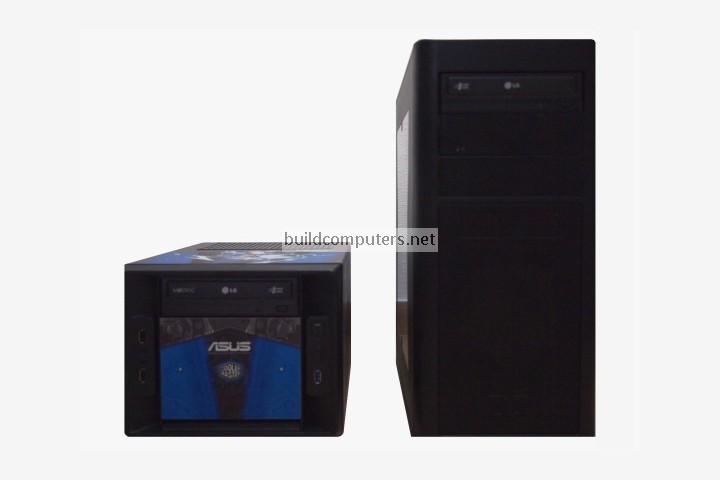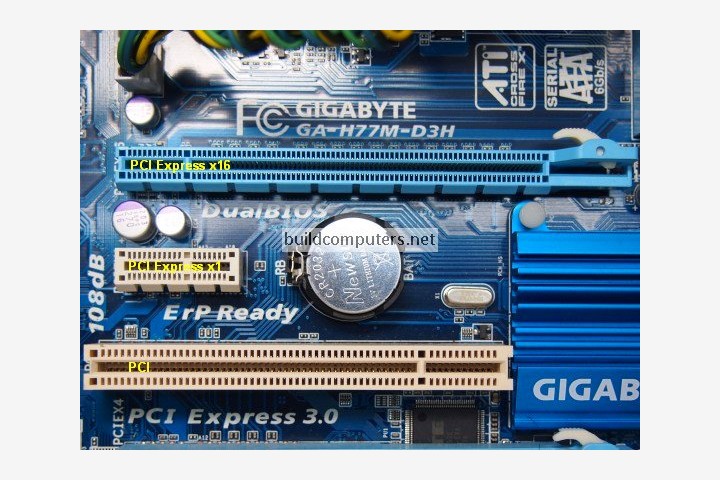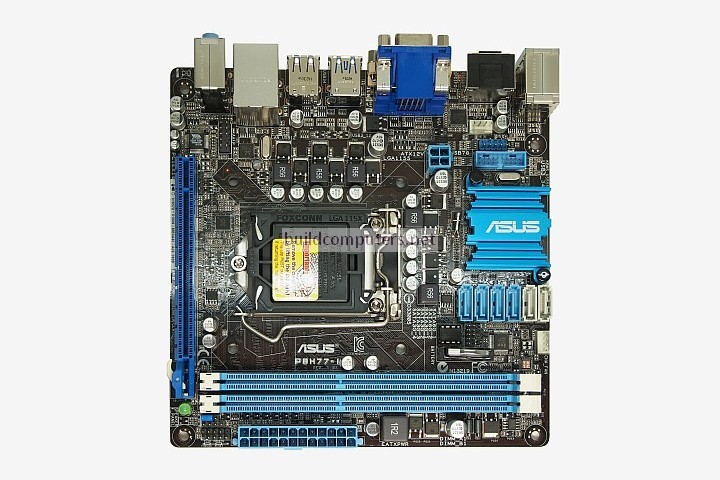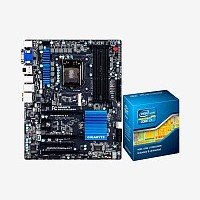Everything You Need to Know About a Mini ITX Motherboard
What is a Mini ITX motherboard and is this small form factor motherboard right for you? Find out now and learn how to choose your Mini-ITX mainboard.
Mini-ITX motherboards had their humble beginnings in 2001 as embedded circuit boards for industrial use.
With the rising popularity of home theater personal computers (HTPC) and small form factor (SFF) computers in recent years, this form factor has emerged into limelight as a popular motherboard choice for pint-sized computers.
Measuring at a modest 17 x 17 cm (6.7 x 6.7 in), this is how a Mini-ITX (also known as mITX) motherboard looks like:
When to Choose Mini ITX Motherboards - Benefits
1. You need a computer for your home theater
It's
no surprise that Mini-ITX is the most popular form factor for HTPCs
(since HTPCs have lower performance needs in general). With a low power
CPU and graphics processor, a Mini ITX system can be silent while being small
enough to fit inside a TV cabinet.
The idea of having a small,
power-saving computer also appeals to basic computer users who don't
need an imposing full tower computer loaded with four graphics card just to
surf the net or watch some videos.
2. Saving space is important to you
Since most Mini-ITX cases are often just the size of large shoe boxes, you're able to free up a lot more desktop space or leg room (depending on your computer placement). This makes it an attractive option in situations where space is a luxury, such as people working in office cubicles or living in small homes.
3. Your computer needs to be semi-portable
It's not something that you can just slip into a backpack... but given its compact form and average weight of 4 to 7 kg (8.8 to 15.4 lbs), transporting it won't be an ordeal. This appeals to gamers who attend LAN parties and folks who move often (e.g. hostel students, foreign workers).
To better illustrate its size and cuteness, here's a shoebox Mini ITX computer (on the left) next to a mid-tower ATX computer (on the right):

When to Avoid Mini ITX Motherboards - Drawbacks
1. You're going for high performance or overclocking
While modern Mini-ITX computers are respectable performers capable of mainstream gaming, they're still no match for their
larger MicroATX and ATX cousins when it comes to raw processing power and break-neck clock speeds.
First reason: Mini-ITX mainboards don't support
top-tier CPUs such as Intel Extreme processors. The motherboard VRM just
can't handle the demands of these power-hungry beasts, plus where are
we going to find room for quad channel RAM?
Second reason:
Overclocking a Mini-ITX computer is possible but depressing. While you
can overclock it, the extent that you can push the CPU, RAM and graphic
card limits is often severely impaired - The motherboard doesn't have
enough phase power, there's no room for a tower heat sink fan or even
sufficient space for proper air flow.
2. You want a computer with good expansion options
One of the most glaring limitations of a Mini ITX motherboards is its single expansion slot. Multiple graphics cards (Nvidia SLI, AMD CrossFireX) are out of the picture, and you're out of luck too if you ever need two or more expansion cards (e.g. a discrete graphics card plus dedicated sound card).
How to Choose the Perfect Mini ITX Motherboard
Recommended Motherboard CPU Combos
Budget Computer:
AMD Athlon 3000G CPU
Gigabyte B450M DS3H Motherboard
Mid Range Computer:
AMD Ryzen 5 3400G CPU
Gigabyte B450 Aorus M Motherboard
Gaming Computer:
AMD Ryzen 5 3600 CPU
Asus AM4 TUF Gaming X570-Plus Motherboard
Home Theater PC:
AMD Ryzen 3 3200G CPU
Gigabyte B450 I Aorus Pro Wi-Fi Motherboard
Click here for our buyer's guide to the best motherboard CPU combos.
Being a small form factor motherboard, mITX boards tend to come with less slots, ports and connectors than their bigger cousins (see our Comparison of the Different Motherboard Form Factors for more details)... so extra care is needed to make sure that your Mini ITX motherboard has all the features that you'll need. Here's our recommendations:
Expansion Slot
Always go for a PCI Express x 16 slot (see image below). Reason? A PCI
Express x16 slot is able to accept PCI Express x1, x4 and x16 cards.
Remember you only have one precious slot, and you'll want to make it count
- A PCI Express x16 slot is able to accommodate the most types of
modern expansion cards.
If your budget is really tight and you're
certain that you won't ever need a discrete graphics card, then a PCI
Express x1 or x4 slot is also acceptable.

SATA Connectors
The number of SATA connectors determines the amount of
internal hard drives and optical drives a motherboard can support.
For
general use, we recommend least three SATA connectors. This allows you to install a
main hard drive and a DVD/Blu Ray drive... leaving one free port in case you
want to add a solid state drive or another hard disk drive in the
future.
If you're intending to install a (SATA 3) solid state
drive, then choose a motherboard with at least one SATA 3 port so that you
can unleash the full speed of your drive.
Display Ports
Choosing the correct display ports is crucial if you're running on
integrated graphics. Find out what are the display ports that your
monitor accepts (VGA and DVI ports are the most popular ones), then make
sure that the motherboard comes with those ports.
For those of
you hooking up your computer to a TV (e.g. home theater PC), a HDMI port
is essential since it allows you to connect to almost all modern TVs...
plus you just need a single HDMI cable to output both video and sound.
Others
With USB 3.0 gaining widespread use and boasting impressive real-world speed gains over USB 2.0 (two to four times faster in most cases), we recommend buying a Mini ITX motherboard with at least one USB 3.0 port for connecting to external storage devices (e.g. USB 3.0 flash drives, hard disk drives and even solid state drives).
SEE ALSO: Recommended Motherboard CPU Combos
MOTHERBOARD GUIDE
- What is a Motherboard and How It Works
- Recommended Motherboard CPU Combos
- Motherboard Components and Parts
- Motherboard Form Factors
- How to Choose a Mini ITX Motherboard
- How to Choose a Micro ATX Motherboard
- How to Choose an ATX Motherboard
- Intel Motherboard Socket Types
- AMD Motherboard Socket Types
- The Difference Between USB 2.0 and 3.0
- How to Install a Motherboard


